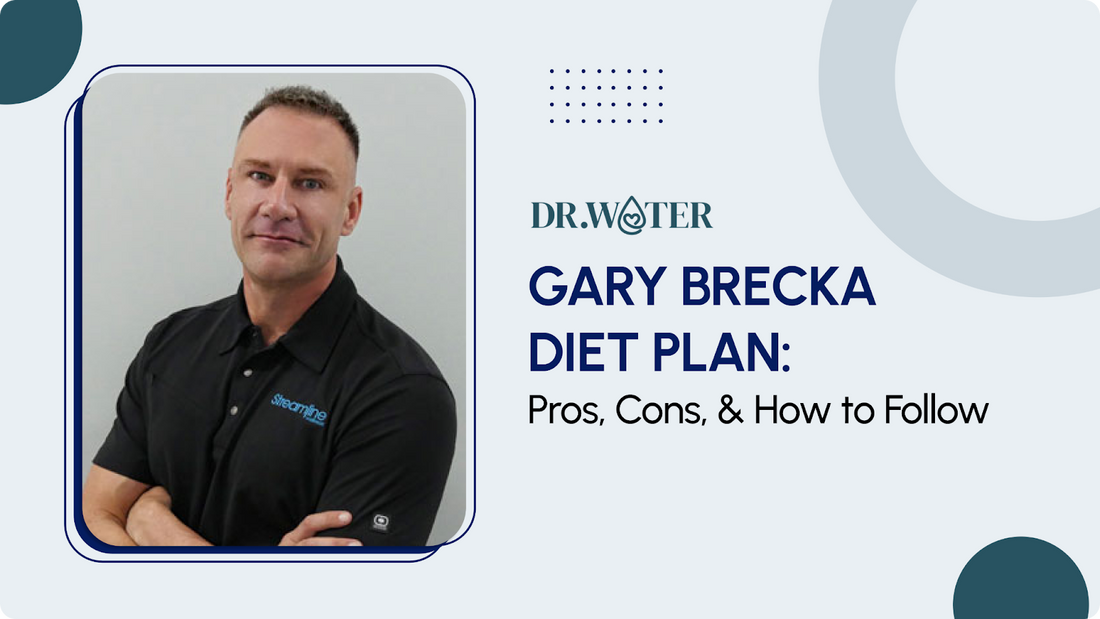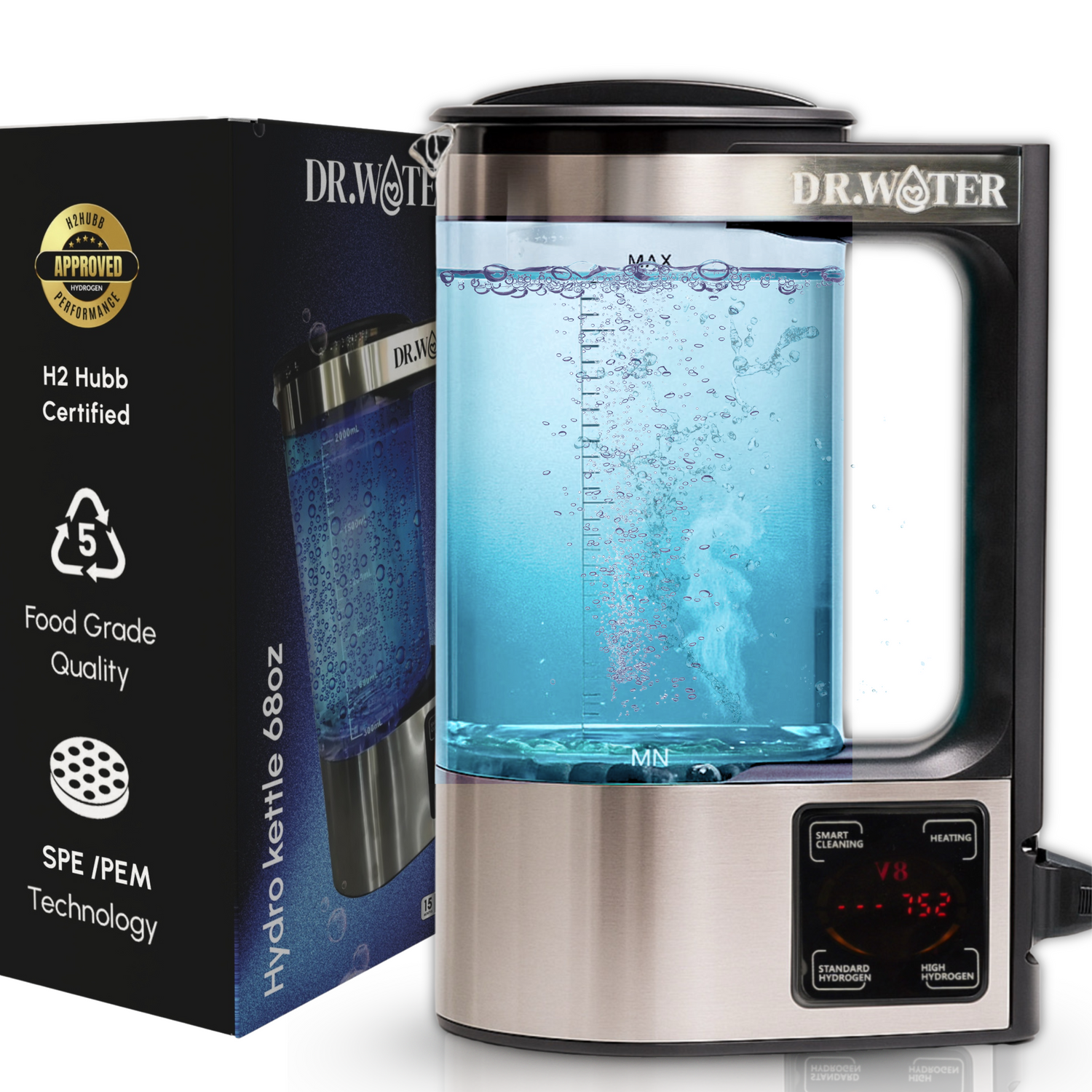
Gary Brecka Diet Plan: Pros, Cons, and How to Follow
Share
Key Takeaways
|
If you’ve been active in social media or wellness blogs lately, you’re probably familiar with the Gary Brecka diet. Promoted as a structured approach to morning nutrition, metabolism optimization, and fat-burning, this diet has captured the attention of biohackers and health enthusiasts alike. But beyond the hype, what does it really involve?
The Gary Brecka diet emphasizes timing, macronutrient balance, and low-intensity morning activity to help your body burn fat efficiently while preserving energy and mental clarity.
In this article, we’ll break down the diet’s core structure, explore its pros and cons, show you how to follow it effectively, and highlight real-world routines that can make it work for your day-to-day life.
What is the Gary Brecka Diet?
The Gary Brecka diet, often referred to as a keto reset diet, emphasizes a high-fat, low-carb, moderate-protein approach to eating. This macronutrient composition is designed to promote metabolic flexibility, support weight management, and optimize overall health.
A typical breakdown of the diet’s macronutrient ratios is as follows:
- Fat: 70–75% of total calories
- Protein: 20–25% of total calories
- Carbohydrates: 5–10% of total calories
Research suggests that high-fat, low-carb diets like this can trigger several biological changes and health benefits.
By prioritizing fat as the primary energy source and minimizing carbohydrate intake, the Gary Brecka diet aims to optimize energy utilization, enhance mental clarity, and support long-term metabolic health.
Knowing the ratios is important, but the real impact comes from how you implement these macronutrient principles in your day-to-day meals and routines.
Core Elements of Gary Brecka's Diet
The core elements are simple:
High-Protein Morning Intake
Consume approximately 30 grams of protein within 30 minutes of waking to kickstart metabolism, reduce cravings, and stabilize blood sugar. Protein sources often include eggs, Greek yogurt, whey protein shakes, or lean meats.
Theory is helpful, but seeing concrete meal examples makes it easier to visualize how the diet fits into your daily schedule.
Real-World Breakfast and Meal Examples
To make the Gary Brecka diet practical, here are sample meals you can incorporate:
Breakfast (within 30 minutes of waking):
- Scrambled eggs with spinach and smoked salmon (approx. 30g protein)
- Greek yogurt with chia seeds, berries, and a scoop of whey protein
- Protein smoothie with banana, almond milk, and plant-based protein powder
Lunch Options:
- Grilled chicken breast with quinoa and roasted vegetables
- Turkey and avocado wrap with whole-grain tortilla
- Lentil salad with mixed greens, cherry tomatoes, and feta cheese
Dinner Options:
- Baked salmon with sweet potato and broccoli
- Lean beef stir-fry with mixed vegetables and brown rice
- Grilled tofu with a side of roasted cauliflower and a leafy green salad
Snacks can include boiled eggs, protein bars, or almonds to maintain satiety between meals.
Meals provide fuel, but pairing them with movement can significantly boost your metabolism, this is where morning cardio routines come in.
Low-Intensity Morning Cardio
Perform 30 minutes of low-impact exercise to enhance fat burning and improve circulation.
Sample Morning Cardio Routines
Morning movement is crucial to the Gary Brecka diet. Low-intensity cardio helps your body burn fat efficiently while preserving muscle. Sample routines include:
- Brisk Walk: 30 minutes around your neighborhood or treadmill
- Light Cycling: Stationary bike or road cycling at a moderate pace
- Bodyweight Circuit: 3 sets of 10 squats, lunges, push-ups, and planks
- Combination Routine: 15 minutes of walking + 15 minutes of stretching or yoga
These routines improve circulation, enhance mood, and complement early protein intake to maximize fat burning.
Exercise primes your body for energy use, but the rest of your day still matters, balancing meals, snacks, and nutrient timing is key for long-term results.
Balanced Nutritional Approach Throughout the Day
Meals focus on whole foods, lean proteins, complex carbohydrates, and healthy fats while avoiding highly processed foods, refined sugars, and excessive snacks.
This combination is designed to optimize insulin sensitivity, support lean muscle retention, and maintain steady energy levels throughout the day.
With a clear picture of what the diet looks like, it’s time to weigh the potential benefits against the challenges you may encounter along the way.
Pros and Cons of the Gary Brecka Diet

Like any diet, the Gary Brecka diet comes with its advantages and potential drawbacks. Understanding both sides can help you decide if it fits your lifestyle and health goals.
Pros:
- Effective weight management: By shifting the body’s energy source from carbohydrates to fat, the diet promotes fat burning and can lead to sustained weight loss.
- Improves metabolic health: Reduces insulin resistance, supports blood sugar regulation, and may help reverse metabolic syndrome, making it suitable for people with prediabetes or type 2 diabetes.
- Enhanced mental clarity: Fat as a primary fuel can stabilize energy, potentially improving focus, mood, and mental performance throughout the day.
- Therapeutic potential: Research links ketogenic-style diets to benefits in neurological conditions such as epilepsy, Alzheimer’s, depression, and bipolar disorder, and it may support adjunctive cancer therapies.
- Appetite and craving control: Early high-protein meals help curb hunger, reduce calorie intake, and prevent energy crashes.
- Supports cardiovascular health: Low-carb, high-fat diets can improve blood lipid profiles, potentially lowering the risk of heart disease when healthy fats are prioritized.
Cons:
- Restrictive and challenging adherence: Limiting carbs to 5–10% of daily calories may be difficult for those used to grains, fruits, or legumes, making social dining or travel more challenging.
- Potential nutrient deficiencies: Without careful planning, the diet can lack fiber, certain vitamins, and minerals commonly found in carbohydrate-rich foods, which may impact gut health.
- Adaptation symptoms: Some individuals experience the “keto flu” during the first week, including fatigue, headaches, nausea, or irritability as the body adjusts to using fat for energy.
- Not suitable for all health conditions: People with kidney or liver disease, pancreatitis, or certain metabolic disorders should avoid or seek professional guidance before starting.
- Long-term sustainability concerns: Maintaining very low carbohydrate intake over months or years can be challenging and may require regular monitoring of blood markers for safety and effectiveness.
Understanding the advantages and limitations is only the first step; now let’s look at how you can implement the plan effectively for real, sustainable results.
How to Follow the Gary Brecka Diet

Implementing the Gary Brecka diet effectively goes beyond just what you eat. It’s about timing, lifestyle, and monitoring your body’s response to low-carb, high-fat nutrition.
1. Prioritize Morning Protocols
Start your day with protein and movement, as this supports metabolic flexibility. Even if you skip specific meal examples, aim to combine early protein intake with light physical activity, such as a brisk walk, gentle stretching, or mobility exercises.
2. Track Macronutrients and Adjust Gradually
Rather than switching abruptly, gradually shift your macronutrient intake to meet the recommended ratios: high fat, moderate protein, and minimal carbs. Use tracking apps to observe how your body responds and make small adjustments to prevent energy dips or fatigue.
3. Manage Carb Timing Strategically
While carbs are restricted, consider consuming small portions of nutrient-dense vegetables around your most active periods. This helps maintain energy for workouts and prevents mental fog during low-carb adaptation.
4. Hydration and Electrolytes
Staying hydrated is essential, particularly when following a ketogenic-style approach. Incorporate electrolyte-rich fluids to maintain mineral balance, support muscle function, and reduce keto-adaptation side effects.
5. Use Biofeedback and Self-Monitoring
Monitor your energy levels, mood, and sleep patterns to understand how your body responds to the diet. Simple tools like heart rate variability, fasting glucose checks, or even journaling can provide insights and guide adjustments.
6. Integrate Recovery and Stress Management
Quality sleep, relaxation routines, and low-intensity activity support hormone balance and optimize fat-burning potential. Stress reduction techniques, such as mindfulness or deep breathing, can complement the diet’s metabolic benefits.
While nutrition and exercise form the foundation, proper hydration can amplify your results and support your body’s metabolic demands throughout the day.
Stay Energized with Dr. Water’s Premium Hydration Solutions
Following the Gary Brecka diet means your body is processing higher fats, moderate proteins, and fewer carbs, which can place extra demands on hydration, electrolytes, and overall metabolic efficiency.

Dr. Water’s advanced hydration products are designed to support this lifestyle, offering scientifically-backed benefits such as improved energy, enhanced nutrient absorption, and optimal cellular function.
|
Product |
Capacity |
Hydrogen Concentration |
Material |
Power Source |
Key Features |
Price (USD) |
|
HydroStanley 32oz |
32 oz |
Up to 3000 ppb |
BPA-free Tritan |
Rechargeable Battery |
Portable, long battery life, high hydrogen concentration, durable design |
$109.99 |
|
HydroPitcher 68oz |
68 oz |
Up to 1500 ppb |
Steel and Glass |
Corded Electric |
Family-sized capacity, self-cleaning mode, rapid hydrogenation, suitable for hot beverages |
$99.99 |
|
Hydro UV 14oz |
14 oz |
Up to 2000 ppb |
BPA-free Tritan |
Rechargeable Battery |
Dual-action UV purification, compact size, high antioxidant properties |
$89.99 |
|
Hydrator Pro |
9.5 oz |
Up to 6 ppm |
Makrolon & Aluminum Oxide |
Rechargeable Battery |
LCD time display, dual operation modes, compact design, high hydrogen concentration |
$149.99 |
|
HydroDaily 13oz |
13 oz |
Up to 3000 ppb |
Tritan or Glass |
Rechargeable Battery |
Quick hydrogen generation in 7 minutes, toxin-free, self-cleaning, portable design |
$79.99 |

Why Choose Dr. Water?
- Mineral-Enriched Hydration: Provides essential electrolytes like magnesium, potassium, and calcium to support energy, muscle function, and metabolic balance, helping prevent fatigue and cramps often experienced during low-carb or keto-style diets.
- pH-Balanced Water: Optimizes your body’s acid-base levels, aiding digestion and enhancing fat metabolism, aligning perfectly with the goals of the Gary Brecka diet.
- Antioxidant Support: Contains natural antioxidants to combat oxidative stress, helping maintain mental clarity, reduce inflammation, and support overall wellness.
- Convenient & Versatile: Available in portable bottles and home filtration systems, making it easy to stay hydrated during morning cardio routines, meals, or anytime energy support is needed.
- High-Quality, Safe Hydration: Every product undergoes advanced purification, ensuring clean, safe, and reliable water with every sip.
Incorporate Dr. Water into your daily routine to maximize the benefits of the Gary Brecka diet, maintain electrolyte balance, and stay energized throughout the day.
Conclusion
The Gary Brecka diet provides a structured approach to managing metabolism, supporting fat loss, and maintaining steady energy levels throughout the day. By combining protein-rich breakfasts, balanced macronutrients, and a simple morning cardio routine, it offers a practical, science-backed framework that can be adapted to your lifestyle.
Take control of your health today, optimize your mornings, fuel your body the right way, and elevate your wellness with the Gary Brecka diet and Dr. Water’s advanced hydration solutions. Shop Dr. Water now and start your journey toward better energy, focus, and overall well-being.
FAQs
1. How flexible is the Brecka plan for those who can't eat immediately upon waking?
Not everyone prefers breakfast right after getting up. You might shift the 30-gram protein window to within one to two hours of waking, while still benefiting from that early nutrition-exercise window.
2. Are there vegetarian or vegan alternatives that match the Brecka protocol?
Although protein timing is critical, plant-based eaters can use high-quality vegan proteins like pea or hemp powder, legumes, tofu, and tempeh, just ensuring the 30-gram target is met.
3. What is the role of hydration in supporting the Brecka regimen?
Proper hydration helps prevent keto flu symptoms, supports digestion, and aids metabolism, especially crucial when you're reducing carbs and starting your day with early exercise.
4. How does Brecka’s approach differ when applied for longevity versus weight loss?
For longevity, the emphasis is on sustaining nutrient density, hormonal balance, and metabolic flexibility rather than rapid weight loss, so daily habits and cellular support become equally, if not more, important.
5. Can you combine the 30-30-30 strategy with intermittent fasting protocols?
Yes, especially if your first meal is timed for later in the morning. You can still incorporate the protein-exercise principle, adjusting the fasting window to fit your wake-eat-exercise schedule.

